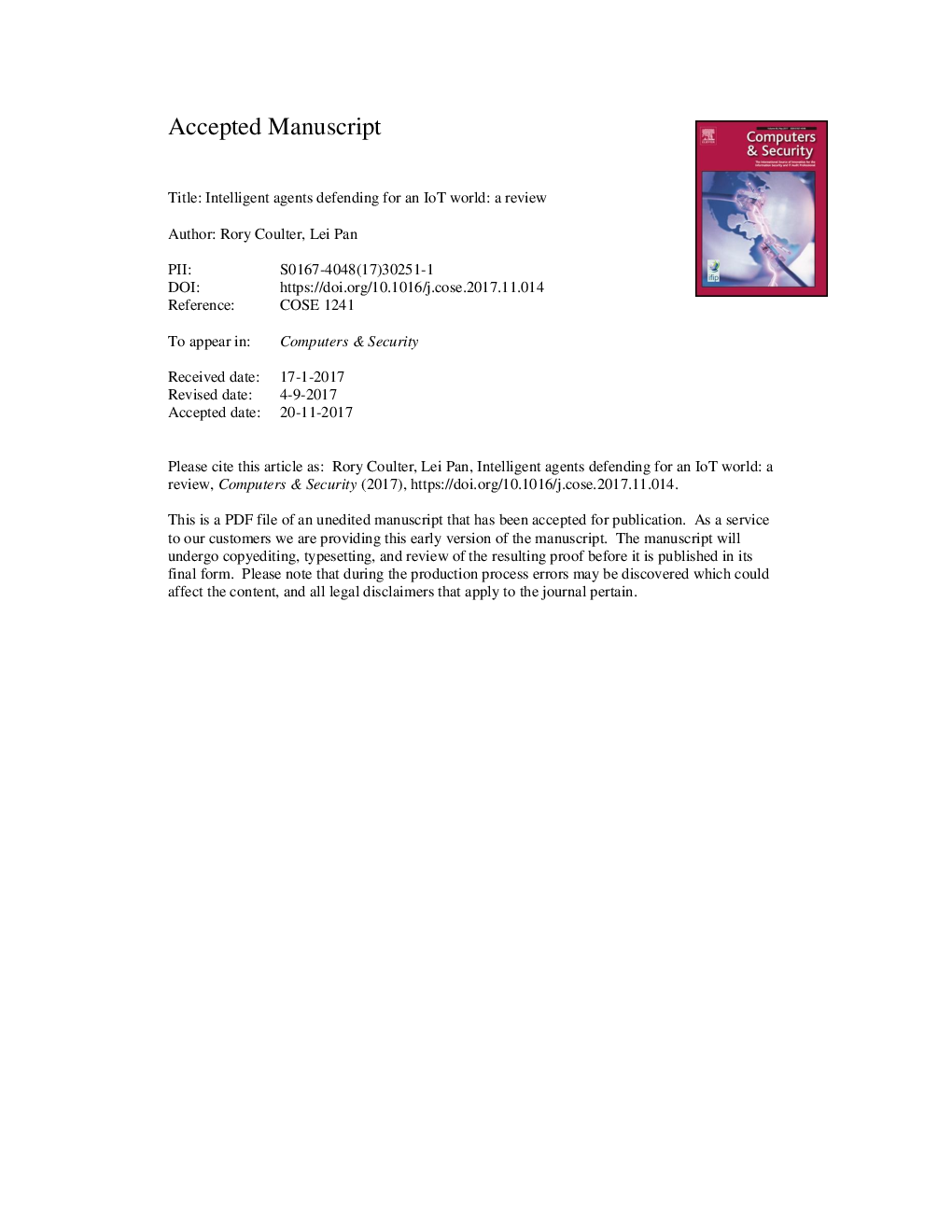| Article ID | Journal | Published Year | Pages | File Type |
|---|---|---|---|---|
| 6884092 | Computers & Security | 2018 | 45 Pages |
Abstract
Transition to the Internet of Things (IoT) is progressing without realization. In light of this securing traditional systems is still a challenging role requiring a mixture of solutions which may negatively impact, or simply, not scale to a desired operational level. Rule and signature based intruder detection remains prominent in commercial deployments, while the use of machine learning for anomaly detection has been an active research area. Behavior detection means have also benefited from the widespread use of mobile and wireless applications. For the use of smart defense systems we propose that we must widen our perspective to not only security, but also to the domains of artificial intelligence and the IoT in better understanding the challenges that lie ahead in hope of achieving autonomous defense. We investigate how intruder detection fits within these domains, particularly as intelligent agents. How current approaches of intruder detection fulfill their role as intelligent agents, the needs of autonomous action regarding compromised nodes that are intelligent, distributed and data driven. The requirements of detection agents among IoT security are vulnerabilities, challenges and their applicable methodologies. In answering aforementioned questions, a survey of recent research work is presented in avoiding refitting old solutions into new roles. This survey is aimed toward security researchers or academics, IoT developers and information officers concerned with the covered areas. Contributions made within this review are the review of literature of traditional and distributed approaches to intruder detection, modeled as intelligent agents for an IoT perspective; defining a common reference of key terms between fields of intruder detection, artificial intelligence and the IoT, identification of key defense cycle requirements for defensive agents, relevant manufacturing and security challenges; and considerations to future development. As the turn of the decade draws nearer we anticipate 2020 as the turning point where deployments become common, not merely just a topic of conversation but where the need for collective, intelligent detection agents work across all layers of the IoT becomes a reality.
Related Topics
Physical Sciences and Engineering
Computer Science
Computer Networks and Communications
Authors
Rory Coulter, Lei Pan,
